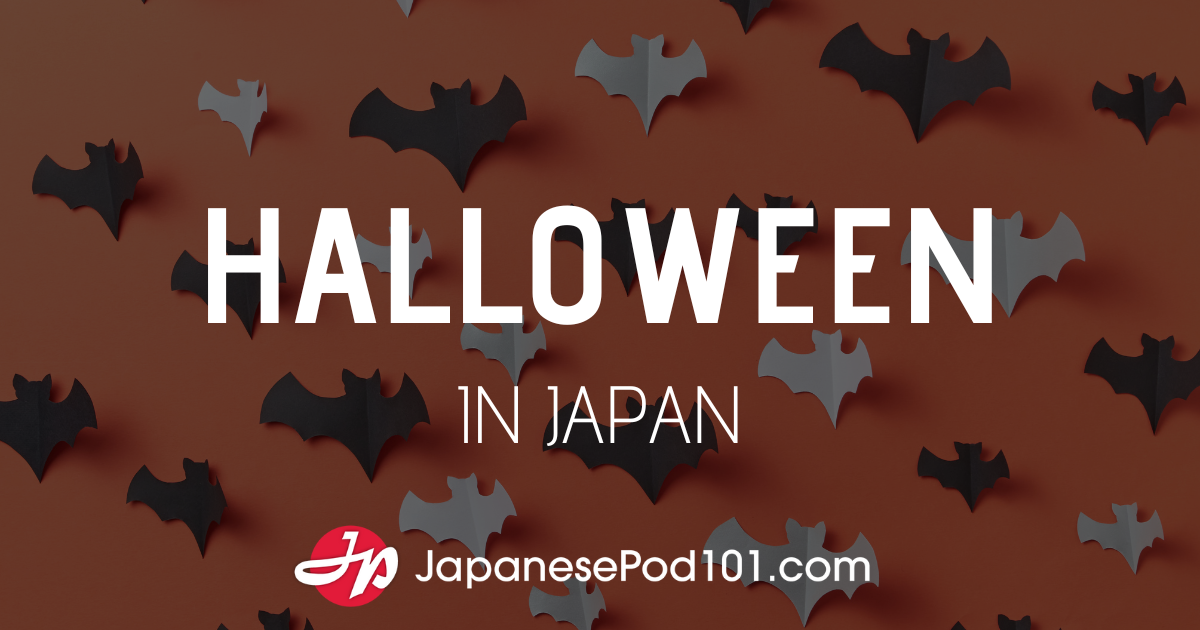Archive for the 'Learn Japanese' Category
July 6, 2009
Learn Japanese – Do you know what Japanese name suffixes mean? (Forum Spotlight)
Welcome to Forum Spotlight! Here we’ll be introducing interesting and useful posts made by members at our very own JapanesePod101.com Forum. This week's forum spotlight post is a question asked by slehner about the various name suffixes that exist in Japanese that was answered by Psy.
=======
Question:
=======
I'm new to the Japanese language and I've seen a few suffixes used with names before but I do not know how to use them or understand the usage of them.
I am familiar with "san" and and "sensei"** and their basic use but the ones I'm curious about I'll list below. I know its quite a list but I'm mostly looking for an understanding of what they mean and how they relate to ones name and the relationship it might place between... Show more
July 2, 2009
Advanced Japanese Lesson – こわい (Fright)
東京の旅館に北海道からの旅行客が泊まりました。部屋まで案内すると、客たちは口々に「あぁ、こわい」「こわい、こわい」と言うではありませんか。案内してきた仲居さんは驚いて、慌てて洗面所の鏡をのぞき込みました。しかし、そこに映っていたのは普段と変わらない自分の顔。
厨房に行って、同僚に「ねぇ、私の顔って怖い?」とたずねました。「え? 別に…。いつもと同じ顔よ」「さっき案内したお客さんが、私の顔を見て『こわい、こわい』って言ったのよ」。
その会話を聞いていた板前さんが、「どこから来たお客さんだい?」と尋ねます。「確か北海道からのお客さんだったわ」と仲居さん。「そりゃ、方言だよ。北海道では『怖い』というのは『疲れた』って意味だぜ」。
こうして仲居さんの謎は解けました。「こわい」という単語を「恐ろしい」という意味だけだと思っていたので、このような誤解が生じたのです。
北関東から北の地域では、「こわい」を「疲れた」という意味でも使います。さらに、西日本や中部地方では「食べ物が硬い」という意味での「こわい」の用法があります。ですから、「このご飯、こわいねぇ」という文章は、ご飯がおそいかかってくるわけではありませんのでご注意を!
=====
Fright :
Travelers from Hokkaido stayed in a Ryokan (Japanese style inn) in Tokyo. When shown to their room they were all saying "Ah, kowai," (Oh, how scary) and "Kowai, kowai" (Frightening, frightening.)
... Show more
June 25, 2009
Advanced Japanese Lesson – 赤い色(The Color Red)
「隣の花は赤い」ということわざを知っていますか? これは、「他人のものは何でも素晴らしく見えて、羨ましく思うこと」です。同じ意味で「隣の芝は青い」ということわざもありますね。
さて、なぜ隣の家に咲いている花は「赤い」のでしょうか? 白や黄色の花だってあるのに、わざわざ「赤」という色を選んでことわざに用いているのには、何か理由があるのでしょうか。
「赤」という色は、日本人にとって「素晴らしい色」「めでたい色」なのです。ですから、結婚式などのお祝い事には赤と白が用いられます。祝賀の記念品として「紅白まんじゅう」が配られることもあります。大晦日の歌番組「紅白歌合戦」を知っている人もいることでしょう。
「紅白」の「紅(くれない)」は「鮮やかな赤色」を表わしています。これ以外にも赤い色を表わす漢字は「朱(しゅ)」(黄色を帯びた赤色)、「丹(に)」(茶色を帯びた赤色)、「緋(ひ)」(濃い赤色)があります。
ところで、あなたの国の子どもたちは太陽を絵に表わすとき、何色を使いますか? 日本の子どもたちはほぼ全員が赤色を用います。日本の国旗も、白地に赤い丸の「日の丸」ですね。このように、「赤」という色は日本では特別な色なのです。
=====
Have any of you ever heard the old saying "the flowers next door are red"? This means, "the things that others have always look better and make people envious." There's also the saying "the grass is always... Show more
June 22, 2009
Learn Japanese – What’s the best way to write out kanji and kana? (Forum Spotlight)
Welcome to Forum Spotlight! Here we’ll be introducing interesting and useful posts made by members at our very own JapanesePod101.com Forum. This week's forum spotlight post is a question asked by debondtjan about the best way to write out kanji and kana that was answered by Belton.
=======
Question:
=======
"For writing the kana/kanji, what would you suggest: a thick pen or a normal pen to practice? The bigger, calligraphic versions of kana & kanji (where they use a thick pen) always look so much better and easier to the eye than the smaller ones.
One problem I currently see in my learning process, is that sometimes small hiragana (on screen) miss some pixels (that you clearly see on bigger hiragana) that aided me in... Show more
June 15, 2009
Learn Japanese – Confused by how the Japanese writing system works? Get answers! (Forum Spotlight)
Welcome to Forum Spotlight! Here we’ll be introducing interesting and useful posts made by members at our very own JapanesePod101.com Forum. This week's forum spotlight post is a question asked by thegsusfreek about the Japanese writing system from a beginner's point of view that was answered by QuackingShoe. If you're a beginner who is confused by how the Japanese writing system works, you'll find some answers here!
=====================
Question from thegsusfreek:
=====================
I've just started using this program and I've signed up for the 7 day premium trial. I'm absolutely loving it! But, I have many questions about written Japanese. I hope that someone can help answer them.
1) In the first table of the "Kanji Close-up"... Show more
June 14, 2009
The Secret Behind Successfully Learning Japanese Effortlessly
How to Really Learn Japanese in Just Minutes a Day and Stick with it
Get an Instant 10% OFF with coupon code FF2009 for a limited time.
The Myth
What if I told you mastering Japanese wasn't that hard. That actually learning the language itself is not nearly as difficult as you may have heard. And that the problem to progressing is an age old one...failure to execute.
The Real Issue
Said another way, "People don't progress 'cause they don't do! If you don't do the work, you won't reach your goals."
It's a bold statement, but think about it.
How many things have you tried, only to give up at some later point in time. Exercising daily, diets, hobbies, etc. Language learning is no exception.
We tend to start out... Show more
June 11, 2009
Advanced Japanese Lesson – 紫陽花 (Hydrangea)
六月の花といえば「あじさい」。日本では、白、ピンク、水色、紫と様々な色のあじさいが咲きそろいます。高さは一メートルくらいで、卵形の葉は光沢のある緑色。葉の縁がギザギザしているのが特徴です。
小さな花びらが集まって咲くあじさい。その名前は花の色に由来しているとか。青より少し濃い色を「藍色」と呼びますが、この「藍色が集まったもの」を表わす「あづさい」が変化して「あじさい」になったそうです。しかし、花びらのように見える色のついた部分は「がく」で、中心にある小さく目立たない部分が花であることは意外に知られていません。
ちなみに、色鮮やかな「がく」は土壌の性質や開花からの日数によって微妙に色を変えます。初めは水色だったのに、だんだんと藍色になり、続いて赤みを帯びて紫色になるのです。この変化していく様子から、「心変わり」という花言葉が生まれたのだそうです。
漢字では「紫陽花」と表現し、「紫」の文字は紫色を、「陽」の文字は太陽、ひいては日が経つこと、「花」の文字は花を表わします。つまり、「太陽を浴びて日が経つと紫色に変わる花」という意味ですね。
雨の滴がしたたるあじさいはロマンティックで、いつまで眺めていても飽きない風情があります
====
Hydrangea :
When people think June, they think of "Ajisai" (Hydrangea). In Japan white, pink, light blue, purple and hydrangea in a number of other colors are in bloom. The plants grow to about a meter in... Show more
June 8, 2009
Learn Japanese – 191 new Kanji that you need to know by next year! Part 3 (Forum Spotlight)
Welcome to Forum Spotlight! Here we’ll be introducing interesting and useful posts made by members at our very own JapanesePod101.com Forum.
This forum spotlight post contains the final part of a list of new proposed Jōyō Kanji, which comes from Psyさん. What are Jōyō Kanji? The answer to that question along with the first installment of the list can be found here! For the second installment, click here.
Here is part 3, the final installment of the new proposed Jōyō Kanji list. Next to each kanji, you will find the reading (onyomi is in katakana, kunyomi is in hiragana), the character's meaning, and a sample word using that kanji.
No
Kanji
Reading
Meaning
Sample Word
126
諦
テイ・あきら(める)... Show more
June 4, 2009
Advanced Japanese Lesson – 水無月 (Month of water)
古来、日本人が使っていたカレンダーでは六月のことを「水無月」(読み方は「みなつき」、「みなづき」)と呼んでいました。漢字の意味は「水が無い月」。しかし、日本では五月から七月にかけて雨続きの天候が続きます。これが「梅雨」(「つゆ」と読みます)ですね。雨がたくさん降る月ですから「水が無い月」ではなく、「水が有る月」と表現した方がよいのに、なぜ「水が無い」という名前がついているのでしょうか。
実は、「みなつき」の「な」は「~の」という意味なのです。つまり、直訳すると「水の月」。水に縁の深い一ヶ月を指しているのです。天候もそうですが、日本ではこの季節に主食の米を育てるため、田に水を引き入れます。ここからも、水との関連がうかがえます。
さて、水無月ほど有名ではありませんが、他にも六月を表わす月の呼び方があるのを知っていますか? たとえば、「風待月」(かぜまちづき)。初夏の涼しい風を待つような一ヶ月、という意味です。ロマンチックですね。
ちなみに、「水無月」という名の和菓子もあります。これは、三角形の白い餅みたいな外郎(ういろう)の上に小豆が乗っているものです。見た目も涼しげ、甘さ控えめでおいしいですよ。
=====
The sixth month of the lunar calendar :
On the ancient Japanese calendar the sixth month of the year was called "Minatsuki" or "Minadzuki." The characters mean 'a month without water.' But in Japan, from about May to July... Show more
June 1, 2009
Learn Japanese – 191 new Kanji that you need to know by next year! Part 2 (Forum Spotlight)
Welcome to Forum Spotlight! Here we’ll be introducing interesting and useful posts made by members at our very own JapanesePod101.com Forum.
This forum spotlight post contains part 2 of a list of new proposed Jōyō Kanji, which comes from Psyさん. What are Jōyō Kanji? The answer to that question along with the first installment of the list can be found here!
Here is part 2 of the new proposed Jōyō Kanji list. Next to each kanji, you will find the reading (onyomi is in katakana, kunyomi is in hiragana), the character's meaning, and a sample word using that kanji.
No
Kanji
Reading
Meaning
Sample Word
65
采
サイ
dice; die
拍手喝采(はくしゅかっさい)
66
塞
サイ・ソク・ふさ(ぐ)・ふさ(がる)
... Show more









